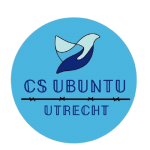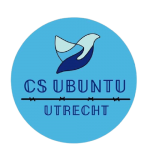Violations of Human Dignity in the asylum system of The Netherlands
By Yousef Al-Sallal
Abstract
The Central Agency for the Reception of Asylum Seekers (COA) is the institution responsible for the reception, support, and guidance of people who apply for asylum in The Netherlands since 1994. It has various responsibilities towards asylum seekers, two of which are maintaining the safety and quality of life and guidance towards a better future in the Netherlands or abroad. This paper aims to show that these duties haven’t been properly met.
Through the framework of human rights in The Netherlands, this research will illustrate the negligence of those duties. This paper will also use Charles Taylor’s social imaginary and the securitization theory as insights to offer an explanation as to why those violations might’ve occurred. Did the COA properly maintain its tasks of safety and quality of life and support and guidance towards a future in the Netherlands or abroad? Media research supported by individual experiences, obtained through semi-constructed interviews, and those of my own, will serve as illustrations to answer this question.
Finally, institutional reform of transitional justice will serve as a tool to suggest the re-building of policies and call for acknowledgment and redress where violations had occurred.
Introduction
Since the different conflicts started in various countries around the globe such as Yemen or Somalia, many people have fled to different parts of the world including the Netherlands to seek asylum. But who is an asylum seeker? According to Amnesty International (2021) “An asylum seeker is a person who has left their country and is seeking protection from persecution and serious human rights violations in another country, but who hasn’t yet been legally recognized as a refugee and is waiting to receive a decision on their asylum claim”. During that period of waiting and even after their claim is granted, asylum seekers and refugees live in different asielzoekerscentra (asylum reception centers) in The Netherlands. When an influx occurs, emergency shelters, such as hotels, ships, or event spaces are used. All of which fall under the responsibility and care of the COA. An asylum seeker then leaves to the care of the municipality when their asylum is granted, are assigned to a municipality and are allocated ‘social housing’ (affordable homes).
This paper will focus on asylum seekers and will look into how the COA hasn’t kept the two duties previously mentioned.
In the preface of the 2020 national action plan on human rights of the Netherlands, Minister Raymond Knops wrote about the importance of human rights and described human dignity as being “at the basis of all human rights. It means putting people first, not institutions, procedures or systems” (The Ministry of the Interior and Kingdom Relations, 2020, pg.5). I will try to resonate this description throughout my paper and interviews, to show how human dignity as well as rights weren’t prioritized over procedures.
In his book, Charles Taylor thought of the social imaginary as “the ways people imagine their social existence, how they fit together with others … and the deeper normative notions and images that underlie these expectations” (Taylor, 2004). Waever described securitization as a speech act whereby “the securitizing actor labels something as an existential threat… and argues for the use of extraordinary measures to counter the threat” (Waever, 2006). Those two theories I believe will offer an insight into those violations. And finally, The International Center for Transitional Justice (ICTJ) described Institutional Reform “as the process of reviewing and restructuring state institutions so that they respect human rights, preserve the rule of law, and are accountable to their constituents”. I will use this tool to suggest reforms where I believe they are needed.
What gives importance and necessity for such research, is that it could help create a voice for a group of people who might feel vulnerable, unable to speak, and may be unaware of their human rights. It might also assist in starting a dialogue that calls for acknowledgment, redress and policy changes where it’s needed.
The Central Agency for the Reception of Asylum Seekers Act (1994)
According to the Central Agency for the Reception of Asylum Seekers Act (1994), and as mentioned on their website, the COA has several tasks towards the people living in its different locations:
- Provide shelter to asylum seekers
- Guide them towards a future in The Netherlands or abroad
- Acquire and manage reception locations
- Maintain the safety and quality of life in the reception locations
- Provide asylum seekers with necessary resources
I have chosen to focus on the highlighted tasks because I believe they are important conditions that asylum seekers lacked under previous governments that abused their rights. I will also attempt to mention the violation of the other tasks more broadly. I will illustrate these violations by using media articles as well as experiences described during interviews.
In August of 2022 an influx of asylum seekers occurred, resulting in “Around 700 people” spending the night outside the gates of Ter Apel in conditions described by Doctors Without Borders as ‘inhumane and unacceptable’ (Hendriks, 2022). People slept on the grass, the bathrooms were filthy and the lack of showers was seen as a health hazard. There was also a lack of medical assistance and a lack of organization as described by different news articles. They also mentioned how those who hadn’t registered their asylum claim were not allowed to move around the center. The situation at the time was a clear violation by COA and other involved parties of the Dutch state of human dignity and human rights as stated by articles 1, 5 and 13 of the universal declaration of human rights (1948), which The Netherlands signed.
However, an article written by The Dutch Council for Refugees (2022), known as Vluchtelingenwerk in Dutch, shows how safety and quality of life had been violated even before that incident. Since September of 2021, an estimated 18.000 asylum seekers and their children have been living in different COA emergency locations. Many of them lacked the basic conditions of privacy, proper sanitation and protection against the weather as described in the article. In addition, children in those locations couldn’t go to school and didn’t have facilities where they could play. Their situation was addressed by the ‘Kind in AZC’ working group which is a coalition of several organizations that work together to ensure that the care of children in the asylum procedure meets that set by the UN Convention on the Rights of the Child.
I argue that the labeling of Ter Apel as a crisis was a strategy of COA to securitize the situation. It relates back to Waever’s (2006) explanation that such a frame might be used to activate extraordinary measures, such as pressuring the municipalities to open more emergency locations which was what the COA did. These locations may lack safety and quality of life, but can be viewed as the only alternative to sleeping on the street. It can also be seen as a disturbance to the ‘social imaginary’ which Taylor (2004) spoke of: asylum seekers can be seen by COA as a reason in causing the shortages of the housing market.
To me, this calls for policy changes so that such a situation is anticipated and dealt with in a more humane manner. Such violations shouldn’t be masked by excuses or shifting of the blame toward other sectors. The COA should’ve acknowledged that incorrect decisions and strategies of opening and closing asylum centers based on the changing number of asylum applications played a role in this shortage (NL Times, 2023). They should also offer redress for those who were or still are affected by this situation.
Moving to the second task the COA is responsible for, I will illustrate how they have not fulfilled this task, and even worse tried to show that they do.
In an article about guidance and support and in the orchestrated documentary (‘We are the COA’) on their website, COA writes and speaks about offering different programs in every center, in an attempt to improve the lives of Asylum-seekers and Refugees. However, this is not the case, which is why I used the word “orchestrated”. I’m making this argument by using information obtained from interviews rather than academic articles, because I believe that they offer a deeper insight into the lived realities of asylum seekers.
Respondent 2 told me how he had inquired about the availability of courses with COA, but had to find out about the existence of free courses offered to asylum seekers on the internet . After getting accepted and explaining the importance of these courses to building his skills and CV, his attempts to get a transfer to the university was rejected and he only got transportation support after pushing many requests forward and not giving up. He felt that they gave it to him to “shut me up”. Had he given up, the outside community might have perceived him as an educated person, who came here to eat and sleep from tax payers money. This was a similar experience as what I went through myself.
Respondent 1 had requested at the beginning of her procedure to be transferred to a city where she had friends who would offer her social support and where she might find more opportunities to build her skills. But she was instead transferred to a location 4 hours away from the location she had requested, and when she chose to stay at a friend’s place in that city, she was told that living outside the location doesn’t mean an exception from the weekly stamping: a procedure for which the resident has to show up once a week, in order to show COA the location card (an identification given to every resident) to proof that they are still in the Netherlands. A process that could have easily been done over a video call in the case of respondent 1.
This type of misguidance, I would say, might lead to the radical form of Welfare chauvinism that Jef Huysmans (Huysmans, 2000) refers to, wherein asylum seekers might be perceived by the local community as exploiters of the welfare system. Thus, they can be seen as the “others” who threaten the local social existence Taylor (2004). COA might not feel responsible for them, because they haven’t received their asylum so they might not stay and be part of the community after all. It could also be further explained by (Lipschutz, 1995) a sense of belonging and the protection of cultural identity. To COA, these people have yet to earn their status of belonging.
This calls for a shift in policies, so that education and training programs on empathy and human rights are included in the COA employee training. This way, more care and support can be given to asylum seekers. I would also suggest involving previous asylum seekers in this reform to fully understand where the COA is neglecting in order to start a correct rebuilding process. I will also talk more about the lack of empathy COA shows in my summary of the interviews.
A summary of the interviews
To understand the experiences people had while living under the care and responsibility of the COA institute, and to further prove that COA hasn’t been keeping up with its two duties in the proper manner, I conducted interviews with three people who went through the COA system.
The first theme I want to address is safety, followed by the quality of life. Here, I want to refer back to the description of human dignity and the framework of human rights in the 2020 national plan, as I think these resonated in my interviews, especially with respondents 1 and 3 who are both females.
Respondent 1 had spent the first night in a makeshift event space in Ter Apel, where she shared an open space of about 50 beds with “mixed people” lined alongside each other with “no privacy”. She was then transferred to Budel: “the worst camp I’ve ever been [to]” as she described Here, her safety concerns started. She was assigned to a room with 4 other women but they were the only women on their floor,with shared showers and toilets located outside the room. She told me: “women felt unsafe” when going to the toilets and showers. She (respondent 1) had heard of “sexual harassment accidents and cases”, and had explained that when a women showers, she would take her friend “to guard the door until she finished”, even though the door locks.
Respondent 3 had also shared similar feelings in a different location in a city located in the South East of The Netherlands (bordering Germany). In her opinion, she believed that they should have separate bathrooms for each gender “at least”. She described the location as “dirty”, and she found signs of rats which made it “scary”. She also mentioned that she never felt “safe in that place”. Respondent 2 also spoke of safety concerns and of the quality of life in the emergency shelter where he was in. I also experienced similar conditions as all 3 respondents myself.
All 3 respondents described the locations they went through as being terrible, dirty and having a non-livable environment. So, as you can see, the concerns of safety and the quality of life aren’t a priority of COA as one might think when reading different articles on their website.
The second theme I want to address is that of empathy, and here I combine the ‘societal threat’ Taylor (2004) spoke of combined with Edward Said’s study on Orientalism (1978), wherein he spoke of “othering” as a narrative of an “Us versus Them” narrativet from the lens of the colonized and the colonizer.
All 3 respondents felt that empathy was lacking. Respondent 1 remembers two female employees of COA who were acting careless while “eating, chatting and laughing” before an introduction to the rules of the location were given. She also remembered a slide about volunteer work. It showed “A women cooking or something and then like someone cleaning”. To her, it felt degrading and was “reinforcing gender stereotypes”. She also mentioned how she felt the hierarchy when engaging with COA employees which made her feel like their “servant”. She also felt that the COA may deny some requests so that they don’t lose the “power” they have.
Respondent 3 spoke of how she sensed that the employees in the location where she was living seemed “angry”, and how in some processes she felt “guilty”. Adding to that, she was lied to about her transfer request to be with her mum being rejected. She spent five months traveling back and forth with her baby each week because of the stamping procedure, just to be with her. She later discovered that her contact person never forwarded the transfer request and had been lying to her. She only knew because when that contact person was replaced with a new one, her new contact person informed her that there was no request in the system, and immediately put in a request, which was approved in a few days. So all these five months of commuting could have been avoided. I had a similar experience to this, but unfortunately I was not able to know for sure if my request was actually put in or not. I only know that nothing happened despite me having a good case.
Respondent 2 felt like the employees don’t believe that negative emotions exist and said that “they dismiss negative emotions” despite it being “a valid thing to have” even though many people have many worries given the situation of their families back home.
Finally, I asked all respondents about the changes they would implement in COA if they had the power, and all 3 respondents agreed that there was a lack of useful information and guidance. They all said that they received zero to minimum guidance and support from COA and respondent 2 felt “blinded”. They also all agreed that COA should include more training, especially in empathy and in dealing with asylum seekers who come from different cultures and might be dealing with mental issues. They all felt that COA lacked information on human rights and more training was needed.
Conclusion
This research paper attempts to show the violations by COA on two duties: safety and quality of life and guidance to a better future in The Netherlands or abroad. It used the framework of human rights, the theoretical approaches of Taylor (2004), Waever (2006), and Lipschutz (1995) and the institutional reform of transitional justice described in the ICTJ website to draw a picture of the situation. The different media and interviews used in this article, I believe, call for changes in policies. I would again suggest involving previous asylum seekers in this reform, to approach those changes from all perspectives. Finally, I would suggest incorporating spiritual counseling as a branch of COA, which can give asylum seekers much needed mental assistance, which I believe they can benefit from.
For future research, I would suggest exploring violations within other tasks the COA is responsible for and which this paper did not address in detail. Last but not least, I would recommend a study of the attitude changes in COA as an institution from supportive to authoritative, which I as a researcher and a refugee personally experienced.
This research aims to shed light on the COA as a system and not on the individuals working for it, many of whom I have met and are actually putting their time and effort into making life easier for those living in the different COA facilities around The Netherlands. As Waever stated: “We also have to look at the possibilities of handling some of these problems in nonsecurity terms, that is, to take on the problems, but leave them unsecuritized” (Lipschutz, 1995). This is a concept I would suggest COA to implement, in order to avoid creating a securitization platform out of the migration situation.
“For some [employees of] COA, it’s a job that they have to do, and they get paid for it. For some, it was also a mission, and it was something they believe in, and they want to make a difference.” These are words from respondent 3, which I believe resonated with the perspectives in this research.
About the author
Yousef Al-Sallal came to the Netherlands in 2022 as a result of the ongoing conflict in Yemen which started in 2015. For a year and a half he lived in different Asylum seeker centers and had to fight for his right to continue his education. Thanks to a program at Utrecht University he was able to join several courses which helped him make the leap from computer science to humanities and conflict studies. This year, Yousef received his asylum residence permit and he is now a masters student at Utrecht University, studying Conflict Studies and Human Rights. Utrecht to Yousef “is home, it gives me a sense of belonging and the energy to keep building my dreams in this new country.”
References
Amnesty International. (2021). Refugees, Asylum Seekers and Migrants. Available at: https://www.amnesty.org/en/what-we-do/refugees-asylum-seekers-and-migrants/.
Buzan, B., Wæver, O., Wæver, O., & De Wilde, J. (1998). Security: A new framework for analysis. Lynne Rienner Publishers.
COA. COA-medewerkers in Ter Apel: “We willen het hier oplossen”. Available in Dutch at: https://www.coa.nl/nl/verhaal/coa-medewerkers-ter-apel-we-willen-het-hier-oplossen.
COA. Crisis Ter Apel: maakt tekort opvangplekken zichtbaar. Available in Dutch at: https://www.coa.nl/nl/crisis-ter-apel-maakt-tekort-opvangplekken-zichtbaar.
COA. Crisissituatie opvang asielzoekers. Available in Dutch at: https://www.coa.nl/nl/crisissituatie-opvang-asielzoekers.
Dutch News NL (2022, 26 August). Refugees moved from Ter Apel as councils try to solve accommodation crisis. Available at: https://www.dutchnews.nl/news/2022/08/refugees-moved-from-ter-apel-as-councils-try-to-solve-accommodation-crisis/
Huysmans, J. (2000). The European Union and the securitization of migration. JCMS: Journal of Common Market Studies, 38(5), 751-777.
Lipschutz, R. D. (1995). On security. Columbia University Press.
NL Times (2022, 10 September). Ter Apel becomes prohibited area for unregistered asylum seekers. Available at: https://nltimes.nl/2022/09/10/ter-apel-becomes-prohibited-area-unregistered-asylum-seekers/.
Pal, T. (2022, 18 July). Opnieuw slapen er Mensen Buiten in Chaotisch Ter Apel. ‘stop met Duwen, Nu Stoppen met Duwen’. Trouw. Available in Dutch at: https://www.trouw.nl/binnenland/opnieuw-slapen-er-mensen-buiten-in-chaotisch-ter-apel-stop-met-duwen-nu-stoppen-met-duwen~bc976bec/.
Taylor, C. (2004). Modern social imaginaries. Duke University Press.
The Dutch Council for Refugees (2022). Vluchtelingenwerk. Achtergrond: De opvangcrisis is niet in Ter Apel, maar in het hele land. Available in Dutch at: https://www.vluchtelingenwerk.nl/nl/artikelen/nieuws/achtergrond-de-opvangcrisis-niet-ter-apel-maar-het-hele-land.
The International Center for Transitional Justice. Institutional Reform. Available at:
The Kingdom of the Netherlands. The Constitution of the Kingdom of the Netherlands (2018). Chapter 1: Fundamental rights.
The Kingdom of the Netherlands. The Ministry of the Interior and Kingdom Relations (2020). National Action Plan on human rights 2020: Access to services.
United Nations (1948). Universal Declaration of Human Rights: Preamble. General Assembly resolution 217 A.
Wæver, O. (2006). The EU as a security actor: Reflections from a pessimistic constructivist on post-sovereign security orders. In International relations theory and the politics of European integration (pp. 250-294). Routledge.
Werkgroep Kind in azc. Onderzoek Werkgroep Kind in azc en het COA. Available in Dutch at: http://www.kind-in-azc.nl/onderzoek-werkgroep-kind-in-azc-en-het-coa/.



